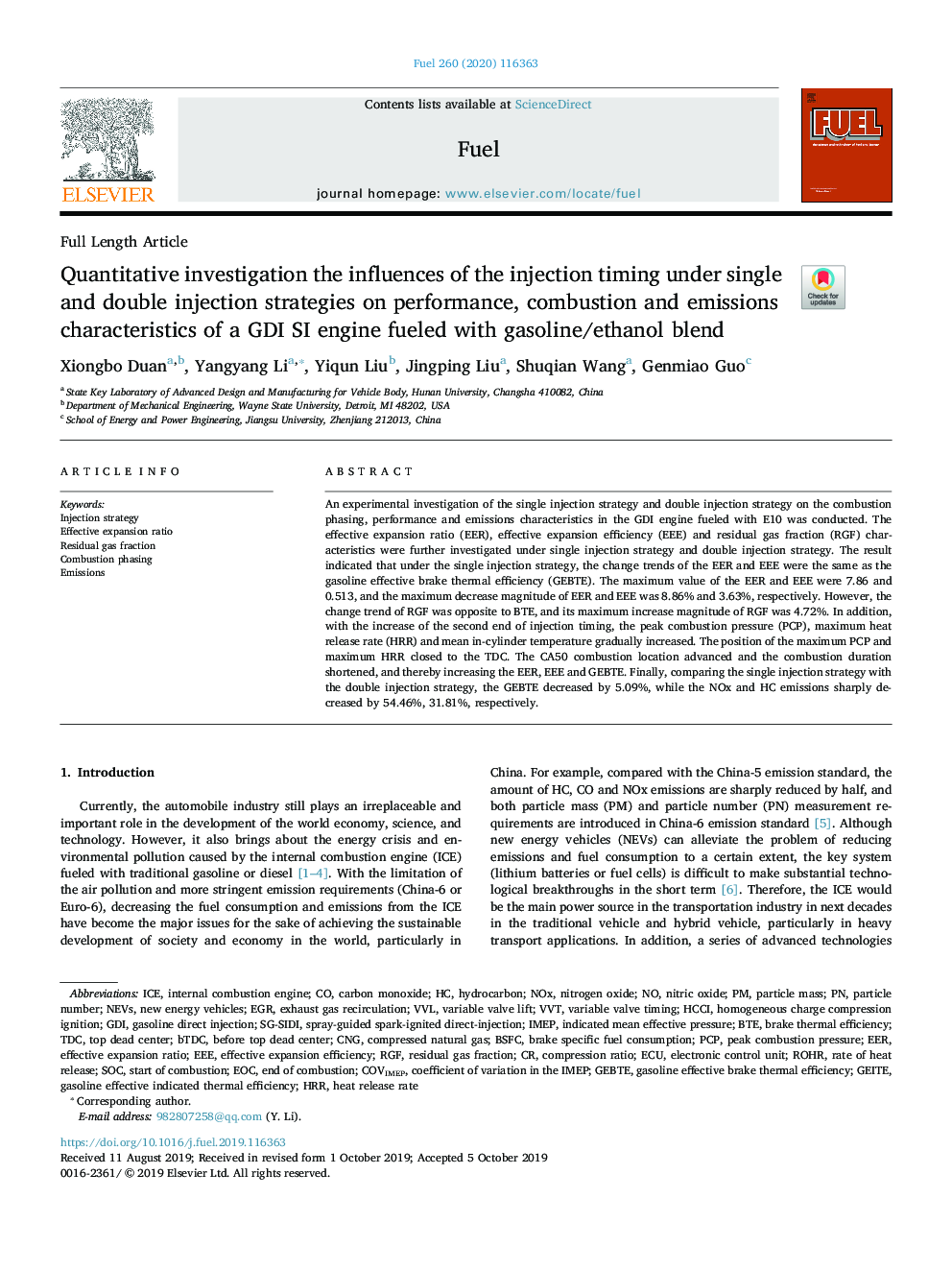| Article ID | Journal | Published Year | Pages | File Type |
|---|---|---|---|---|
| 13415815 | Fuel | 2020 | 11 Pages |
Abstract
An experimental investigation of the single injection strategy and double injection strategy on the combustion phasing, performance and emissions characteristics in the GDI engine fueled with E10 was conducted. The effective expansion ratio (EER), effective expansion efficiency (EEE) and residual gas fraction (RGF) characteristics were further investigated under single injection strategy and double injection strategy. The result indicated that under the single injection strategy, the change trends of the EER and EEE were the same as the gasoline effective brake thermal efficiency (GEBTE). The maximum value of the EER and EEE were 7.86 and 0.513, and the maximum decrease magnitude of EER and EEE was 8.86% and 3.63%, respectively. However, the change trend of RGF was opposite to BTE, and its maximum increase magnitude of RGF was 4.72%. In addition, with the increase of the second end of injection timing, the peak combustion pressure (PCP), maximum heat release rate (HRR) and mean in-cylinder temperature gradually increased. The position of the maximum PCP and maximum HRR closed to the TDC. The CA50 combustion location advanced and the combustion duration shortened, and thereby increasing the EER, EEE and GEBTE. Finally, comparing the single injection strategy with the double injection strategy, the GEBTE decreased by 5.09%, while the NOx and HC emissions sharply decreased by 54.46%, 31.81%, respectively.
Keywords
ECUCOVimepVVTvvlRGFEOCEEEPCPIMEPHRRHCCITDCBSFCGDIEGRCNGbTDCEERNOxInjection strategyEmissionsnitrogen oxidebrake specific fuel consumptiongasoline direct injectionparticle numberParticle massBrake thermal efficiencyRoHRVariable valve timingHomogeneous Charge Compression IgnitionSOCStart of combustionCombustion phasingbefore top dead centertop dead centercarbon monoxideinternal combustion engineRate of heat releaseHeat release rateCompression ratioIndicated mean effective pressureNitric oxidehydrocarbonelectronic control unitNew energy vehiclesBTEend of combustionResidual gas fractioncompressed natural gasexhaust gas recirculationIce
Related Topics
Physical Sciences and Engineering
Chemical Engineering
Chemical Engineering (General)
Authors
Xiongbo Duan, Yangyang Li, Yiqun Liu, Jingping Liu, Shuqian Wang, Genmiao Guo,
